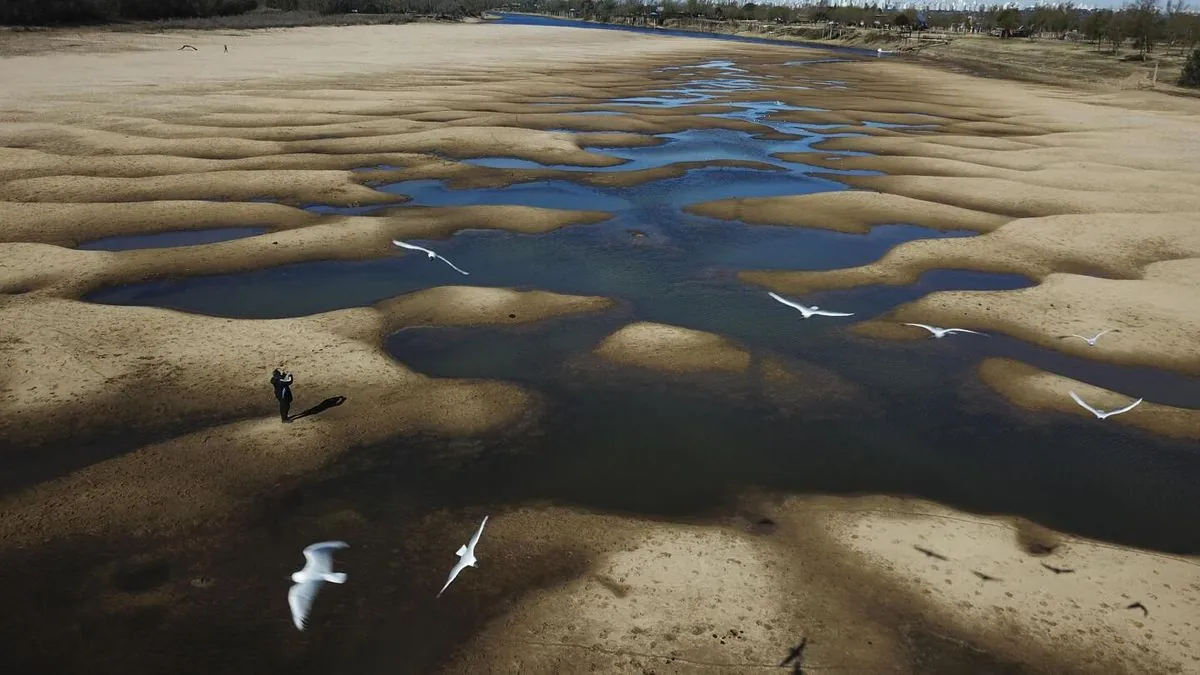Paraguay River Hits 120-Year Low, Disrupting Regional Commerce
Record-low water levels in the Paraguay River, caused by Amazon drought, disrupt regional trade and fishing. Experts warn of increasing frequency and intensity of droughts globally.

The Paraguay River, a vital waterway in South America, has reached its lowest level in 120 years, causing significant disruptions to regional commerce and local transport. This unprecedented situation, observed on September 10, 2024, serves as a stark reminder of the global water crisis exacerbated by climate change and environmental degradation.
According to Paraguay's Department of Meteorology and Hydrology, water levels at the port of Asunción, the capital, dropped 89 centimeters (35 inches) below the meter's benchmark. This marks the most severe decline since records began in 1904, surpassing the previous low set just three years earlier in October 2021.
The Paraguay River, stretching 2,621 km (1,629 mi), is a crucial component of the Paraguay-Paraná waterway system. This 3,400-kilometer network connects five countries - Argentina, Brazil, Uruguay, Paraguay, and Bolivia - making it a vital transport hub for agricultural products and other commodities.

The current crisis has had immediate and far-reaching consequences. In Paraguay alone, 1,600 fishermen have been left without work, while 80% of the country's international commerce, which relies heavily on river transport, has been affected. Fermín Giménez, a sailor whose barge became stranded as the river dried up, described the situation as "a disaster."
The impact extends beyond Paraguay's borders. Brazil's iron ore exports and Bolivia's fuel shipments have been disrupted, forcing costly rerouting and delays. Raúl Valdez, president of Paraguay's Center of River and Maritime Shipowners, expressed concern about potential electricity supply cuts and estimated losses in the hundreds of millions of dollars.
This dire situation is not isolated to South America. Rivers worldwide, from the Colorado in North America to those in France and Brazil's Amazon, are experiencing similar challenges. Rachael McDonnell, deputy director-general for research at the International Water Management Institute, notes that droughts are becoming "longer, more intense, more frequent, and more difficult to recover from" globally.
The root causes of this crisis are complex and interconnected. Climate change, deforestation, population growth, and inefficient water management practices all contribute to the problem. The Amazon rainforest, crucial for regional rainfall patterns, has been particularly affected. In 2024, an extreme drought, largely attributed to climate change, has worsened, fueling wildfires along Paraguay's northeast border with Brazil and in parts of Bolivia.
The Paraguay River basin, covering approximately 1,095,000 square kilometers, is not only economically significant but also ecologically vital. It's home to over 350 fish species and forms part of the Pantanal, the world's largest tropical wetland. The current crisis threatens this delicate ecosystem and the livelihoods of communities that have depended on the river for generations.
As the situation unfolds, with no significant rainfall expected in the coming weeks, the question of whether this is a new pattern looms large. The recurring nature of these extreme events, with record lows being set and broken within short intervals, suggests a troubling trend that demands urgent attention and action on a global scale.
"Our main question is, will this now be a new pattern? No one is expecting a quick recovery. It's a major concern for the whole region."
This crisis serves as a stark reminder of the interconnectedness of global ecosystems and the urgent need for sustainable water management practices worldwide. As climate change continues to alter weather patterns and exacerbate extreme events, the Paraguay River's plight may well be a glimpse into a challenging future that many regions around the world could face.


































